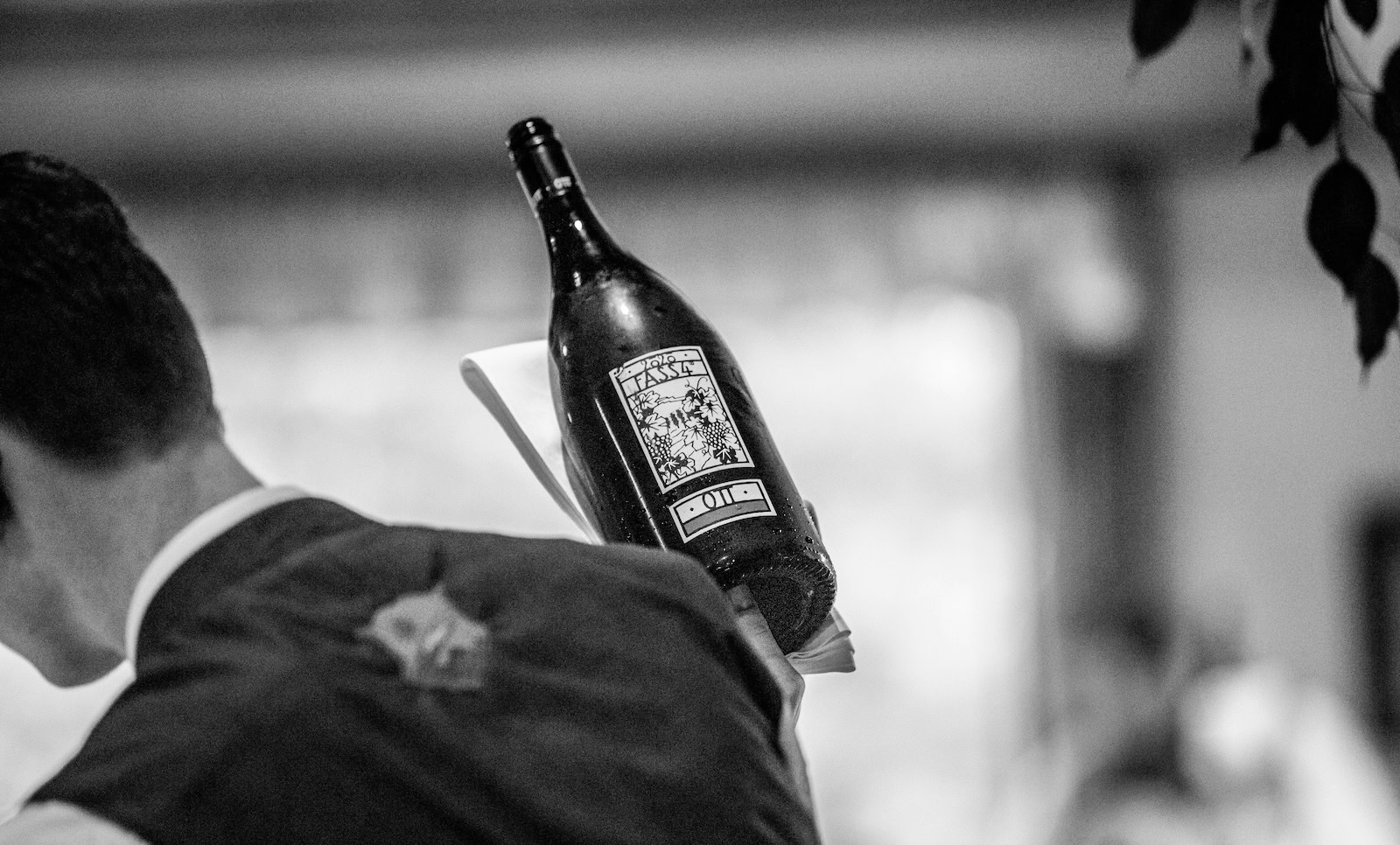For many, it’s a moment of silent dread, and one of the most asked questions from readers of my newsletter. The wine list arrives – weighty and leather-bound – and suddenly everyone’s looking in different directions. One person fiddles with their napkin. Someone else pretends they’re still deciding on mains. A low murmur about “something textural”… You nod solemnly, praying nobody asks if you know the difference between Barolo and Burgundy.
But here’s the truth: you don’t need to speak fluent sommelier to navigate a wine list with confidence. Whether you’re trying to impress a date or just wanting to avoid ordering something that tastes like regret, knowing where to look (and what to skip), can make all the difference.
Know Your Regions, Not Just Your Grapes
If you like a Barolo but not the Barolo price tag, look for Nebbiolo from Langhe – same grape, same vibes, a fraction of the price. Sydney’s Neptune’s Grotto boasts a stellar selection, with sommelier and co-founder Andy Tyson dedicating an entire page of the list to these wines. “A lot of the top producers make declassified Nebbiolo using fruit from within or just outside the Barolo or Barbaresco zones,” he explains. “They often see little or no oak, which gives them more purity and energy – sometimes even more so than the Barolo itself.”
You also can’t go wrong with a Mount Etna red – Etna Rosso, if you want the extra flex. Crafted primarily from Nerello Mascalese, these Sicilian wines offer a smoky, complex character that’s often compared to Pinot Noir, but with a distinct volcanic edge.
The same goes for Jura whites. Whether it’s the oxidative, nutty Savagnin or the textured, expressive Chardonnay, wines from this region offer depth, personality, and a sophisticated twist that’ll impress even seasoned enthusiasts. In fact, Jura anything is worth your attention. I had my first Jura red at Ester recently and (like every other mouthful) it absolutely floored me. Luckily, you don’t need to be in Sydney to try it. The fantastic Marie-Pierre Chevassou-Fassenet Pinot Noir 2023 I’m referring to is also available to order from Pierre Stock.
Avoid the Big Names
Everyone knows Napa Cab, Chablis, and Champagne. The problem is you’re often paying for recognition. If you want to taste something just as thrilling, but less predictable, look beyond the usual suspects.
Try Crémant over Champagne. These sparkling wines from regions like Burgundy, Alsace, or the Loire offer fine bubbles, bright acidity, and elegance that can rival their famous sibling. Staying in this winter? P&V’s fizz of the month – a non-vintage Domaine Clement Klur Cremant d’Alsace – is an easy win, guaranteed to brighten up a quiet evening.
Keep an eye out for white Burgundy’s forgotten grape, Aligoté. Increasingly popular on Australian wine lists, Aligoté offers a similar minerality and crispness to Chardonnay, but with its own fresh, zesty personality. Sylvain Pataille’s Bourgogne Aligoté is a standout. Stock’s running low online (with good reason), but if you’re lucky, you might still spot it on a savvy wine list.

With respect to reds, reach for a Barbera from Piedmont – often overlooked in favour of Nebbiolo, but arguably far more versatile. Look for Barbera d’Alba if you’re after something deeper and richer, or Barbera d’Asti for a brighter, fresher expression. Plush with dark cherry, fresh acidity, and just enough grip, it’s perfect for those who want a red that’s juicy but structured. It plays well with food, feels serious without being heavy, and rarely disappoints.
Embrace the Up-and-Comers
Greek wines are really having a moment right now — and for good reason. From the crisp, mineral-driven Assyrtiko of Santorini to the rich, velvety Agiorgitiko reds, these wines offer a fresh, vibrant alternative to more traditional regions.
If you’re dining somewhere with a distinct regional focus, lean in. Remember, great restaurants build their wine lists to complement the food – use that to your advantage. Melbourne Supper Club’s KAFENEION “emeis & emeis” has a stellar lineup of Greek wines that pour near-perfectly alongside the slow-cooked, olive oil–rich dishes (ladera) the restaurant is known for. Meanwhile, the Hungarian Vaskapu Kadarka at Sydney’s Corner 75 is reason enough to book a table (that, and the strudel of course).

From one side of the Med to the other, Portuguese whites also deserve a serious look. The 2021 Luis Seabra ‘Xisto Ilimitado Branco’ is a great place to start, proof that the Douro isn’t just about those big punchy reds.
And just for good measure, here are a few extra out-of-field bottles (that I love) to keep on your radar:
- Papa Panda’s Rising is a German Riesling from Jan Matthias Klein’s Pandamonium range — made in collaboration with rising-star growers across the region. I genuinely can’t overstate how good this wine is.
- Have you ever tried a Chinese orange? Now could be your time. Xiao Pu Tangerine 2023 is a real “if you know, you know”, very limited, but available to order online at P&V.
- Gut Oggau on any list (or shelf) is a green light. Cult Austrian producer, industry darling and personal favourite.

And as they say, if you don’t ask…
Leaving the best tip to last. Don’t be afraid to ask. The trick is to frame your preferences: “I like something earthy and light-bodied like Pinot, but open to something different under $120.” A good sommelier will respect that – and if you’re lucky, they’ll steer you toward Jura, Etna, or something new and truly special.
And remember: by-the-glass pours often carry the biggest margins. If you’re planning on more than two, always scan the bottle list – you’ll usually get better value and a far more interesting drop.

